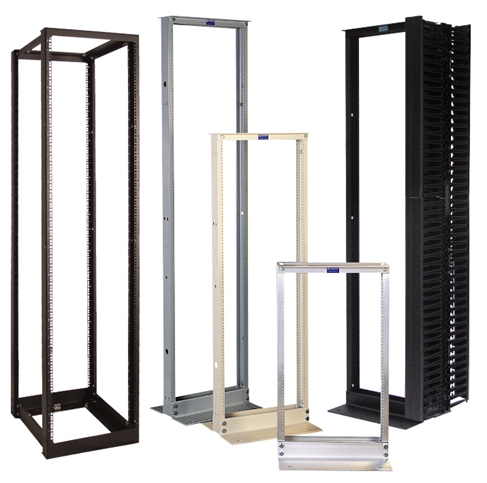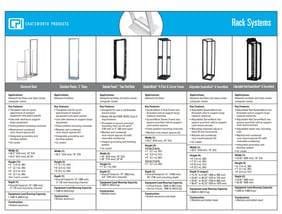Do you have a computer room or data center that you need to organize? Do you plan to set up expensive equipment within a small area? If this description matches your current situation, we want you to remember one thing: make the best use of your space. Why, do you ask?

Solutions like open frame server racks are not only cost-effective, accessible, and durable, but also provide fantastic organizational support. As you begin to research the variations of rack systems, you'll find that each one uniquely supports network facilities.
For example, rack systems provide:
- Data centers, active equipment, and cable patching platforms with a trustworthy solution
- Easy access to equipment and cabling sections, with no walls or side panels, reducing maintenance time and cost
- Unrestricted airflow to equipment
- Strong support, with load ratings up to 1500 lb (680.4 kg) for two-post racks, and up to 2200 lb (1000 kg) for four-post racks
Open frame racks have a relatively low power load, making them a good choice for telecom equipment, servers, networking, or anywhere cooling requirements are not a direct concern.
Note the relationship of rack height to ceiling height in the graphic above.
Two-Post or Four-Post?
The difference between the two options is fairly straightforward. Two-post racks are typically used with open, floor-mount racks for patch panels and fiber enclosures with rack-mount equipment that is less than 20”D (510 mm), while four-post racks are a smarter choice for larger and heavier equipment, like network switches, because they surround equipment and provide front and rear support. Making the right selection usually depends on your current and future equipment needs.
After weighing the benefits, you'll eventually narrow down your options to a single rack system that makes sense with your application. The time to make a selection has come, but you may still be doubting your top product requirements. Chatsworth Products offers five key factors: Durability, Safety, Security, Stability, and Strength.
 Plan For Rack Mount Dimensions
Plan For Rack Mount Dimensions
No matter which open frame server rack you choose, be sure to remember:
- The width of your rack-mount must be the same as the width of your equipment requirements
- The depth of your rack, especially if it's a four-post rack, must be carefully measured and chosen accordingly
- The height of your rack determines the number of rack-mount unit (U) spaces on your rack
- You should leave a minimum of 3’ (0.9 m) aisle at the front and rear of your rack. Always leave 3” to 6” (80 mm to 150 mm) of space between the top of racks and cable runway. Leave 12” (300 mm) between each tier of cable runway and 18” (460 mm) between the ceiling and the top tier of cable runway.
In other words, plan your dimensions accordingly. You'll need proper overhead space for a cable runway or cable trays if they suit your fancy. It's also worth noting that marked or numbered rack-mounts help determine the space available for making future changes.
With these tips in mind, be sure to review Chatsworth Products’ (CPI) Quick Reference Guide for Rack Systems. In an easy-to-scroll chart, you’ll find everything you need to find the right rack to suit your specific application needs, and the accessories to match.
Contact your local Accu-Tech Representative to learn more, or visit the Chatsworth Products, Inc. vendor page.





.png?width=58&height=58&name=X_logo_2023_(white).png)
